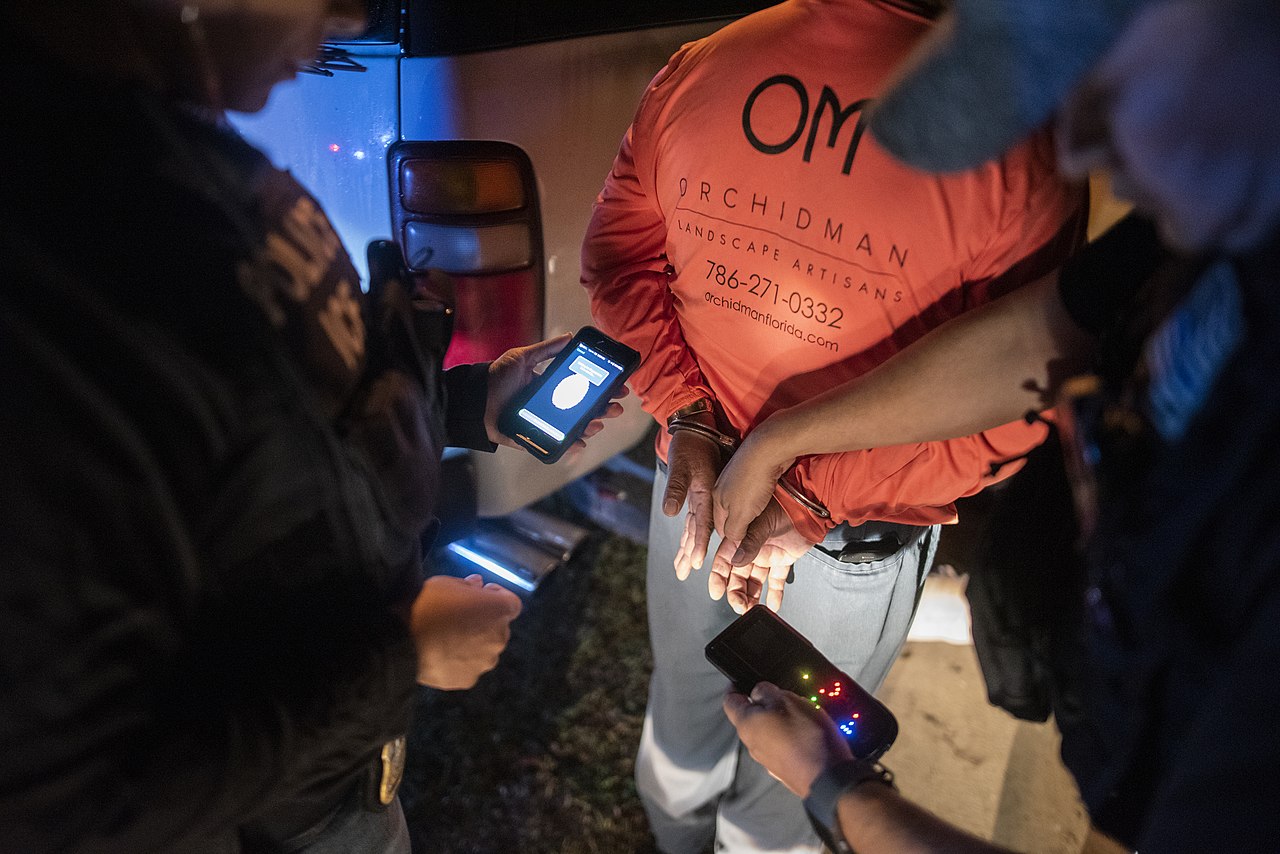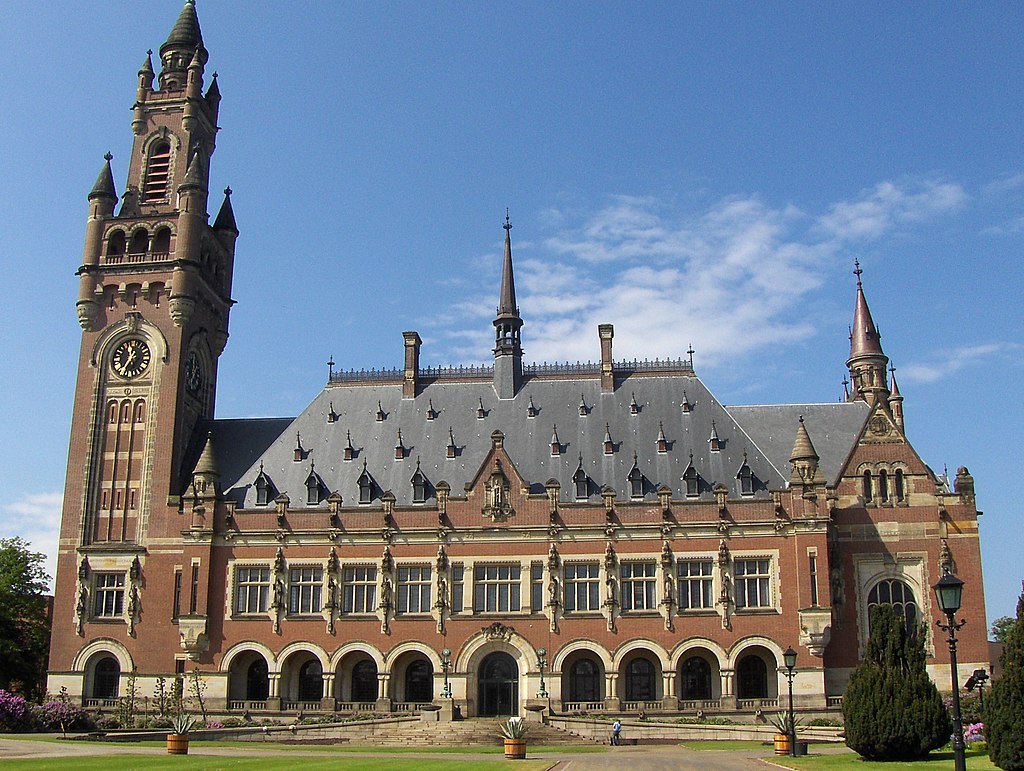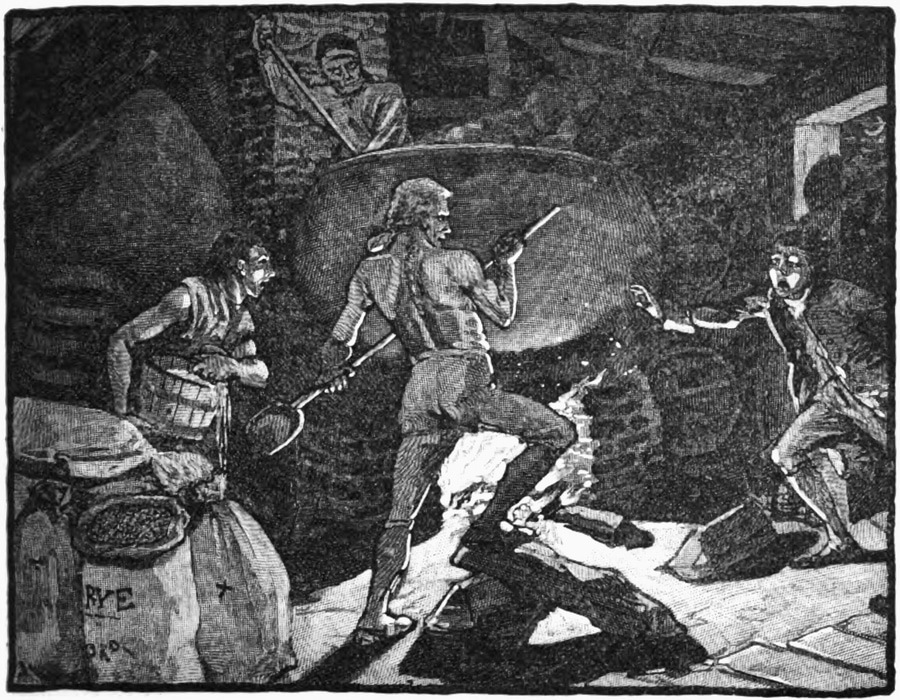Beyond Deportation
How the logic of immigration control erodes civil liberties and legitimates unjustified domestic policing and surveillance.

Published by The Lawfare Institute
in Cooperation With

Border enforcement once again dominates contemporary immigration law debates. Yet many legal practices commonly linked to border control—including policing, relocation, and exclusion—actually have little to do with immigration enforcement. Instead, immigration control provides a justification for surveillance and the erosion of civil liberties deep inside the United States. For instance, the governor of Texas issued an executive order this June, asserting the legal authority to arrest people suspected of unlawfully crossing the border or committing “other violations of federal law.” This executive order is framed as being about expanding the pipeline to deportation and, in particular, shoring up federal efforts to promote border security. Yet the reach of the order goes well beyond issues relating to deportation. It raises the central questions: Who decides who appears to be present in the United States without lawful immigration status, and on what basis?
More recently, certain lawmakers have employed the rhetoric of border control to justify busing or flying migrants to locations inside the United States. Texas Governor Greg Abbott (R) tweeted at the time: “We’re sending migrants to [Vice President Kamala Harris’s] backyard to call on the Biden Administration to do its job & secure the border.” Florida Governor Ron DeSantis (R) employed similar rhetoric to justify sending approximately 50 adults and children to Martha’s Vineyard without any apparent prior notice. This relocation may have violated criminal laws. The individuals who were relocated may have been given false information to induce them to board planes. Lawmakers who frame these relocations as a means of border control make the unjustified assumption that the targeted individuals had no claims to remain in the United States. This approach not only ignores laws permitting people to seek asylum but also treats certain U.S. residents as lacking basic civil liberties inside the United States. When government officials claim the ability to lure people from one state to another on false pretenses, they also claim virtually unlimited power to intrude on individual liberty in stated service of immigration control.
It is easy to dismiss these efforts as political stunts. But it is important to recognize that such relocations are also part of a deeply rooted and problematic legal tradition of employing the logic of immigration control as a means of eroding civil liberties deep inside the United States. A myopic legal and policy focus on deportation—namely, on the question of who is selected for deportation and under what terms—misses how immigration enforcement legitimizes what should be seen as unjustified surveillance, arrest, and detention. Lawmakers treat the presence of certain U.S. residents itself as a threat to the larger political community. As I argued recently in the Yale Law Journal, when courts ignore unjustified surveillance practices—treating these practices as nothing more than a pipeline to deportation, they adopt a lens too narrow to recognize how immigration control can function as race-based domestic policing. As a result, courts sidestep how policing and surveillance itself can cut against civil liberties of U.S. residents stereotyped as “foreign.”
The legal history of immigration enforcement—and, particularly, the legal doctrine that emerged from the era of Chinese Exclusion—continues to offer important lessons for contemporary immigration debates.
Lessons From Chinese Exclusion
Immigration enforcement is often framed as a binary: People are either entitled to remain in the United States or they are not. Yet immigration enforcement has never been just about excluding people or deporting them; it has always also affected communities deep inside the United States. Enforcement choices shape who is recognized as a citizen and who is permitted to integrate over time into the larger political community.
The era of Chinese Exclusion set the stage for a legal framework that focused on deportation and accepted race-based domestic policing in stated service of immigration control. In 1882, Congress passed the Chinese Exclusion Act, which barred Chinese people from immigrating to the United States. This law was passed in response to virulent anti-Chinese sentiment; lawmakers viewed Chinese workers as racially inferior and saw their presence itself as a threat to the American polity. The Chinese Exclusion Act was aimed at preventing Chinese migration to the United States. A decade later, Congress passed the Geary Act, which sought to deport Chinese people already living in the United States. The Geary Act required “any Chinese person or person of Chinese descent” to obtain a “certificate of residence” or else establish through a “credible white witness” their eligibility to remain in the United States. In seminal decisions, Chae Chan Ping v. United States and Fong Yue Ting v. United States, the U.S. Supreme Court upheld both laws.
Today, immigration lawyers commonly view Fong Yue Ting, the 1893 decision upholding the Geary Act, as a decision about race-based deportation. Yet the law in question reached well beyond removal. It required people of apparent Chinese ancestry to provide evidence of their immigration status on demand or else risk potential arrest, detention, and deportation. Race provided the stated justification for singling out a group of U.S. residents and treating them as presumptively deportable.
Even at a time of virulent anti-Chinese sentiment, some observers raised concerns that the law created unjustified surveillance. As Justice David Brewer wrote in a dissent opinion in Fong Yue Ting, the law transformed the targets into “ticket-of-leave” men—a reference to former prisoners who were required to carry and display their leave tickets—who could not move about freely without being subject to risk of arrest and detention. The majority, however, did not engage with the policing practices at issue or respond to this language in the dissent. By treating the law at issue as being solely about deportation, the majority opinion misconstrued the reach of the law, as well as its impact. As I have detailed in the Yale Law Journal, by taking this approach, the majority treated racial surveillance and the prospect of repeated stops and status checks as mere steps toward the eventual end of deportation: “Under this logic, if a resident was stopped hundreds of times and required to show a certificate of residence before being permitted to travel, that would function as a legitimate form of immigration control—regardless of whether the resident was ever subject to deportation or a deportation-related arrest.”
By framing the law just as a means of effectuating deportation, the Court ignored the policing practices at issue, which selectively eroded civil liberties along racial lines. This approach of using race as a proxy for immigration status persisted over time. In an 1898 decision, United States v. Wong Kim Ark, the U.S. Supreme Court accepted the government’s argument that “race, language, color, and dress” could be used to identify presumptive citizenship status for the purpose of enforcing immigration law. Wong Kim Ark was a U.S. citizen born to Chinese immigrant parents. He lived in the United States for over two decades before visiting China. On his return, he was arrested and detained as a deportable noncitizen. The U.S. government argued that he should be racially barred from birthright citizenship. Even as the Supreme Court rejected this argument and recognized that he was entitled to birthright citizenship, the Court also accepted the government’s argument that immigration officials acted properly in arresting and detaining him based on his apparent race. As a result of this approach, U.S. residents who fit a particular racial profile could presumptively be arrested and detained on the suspicion that they were foreign; they were treated as perpetual foreigners, regardless of their actual legal status.
The Supreme Court continued to rely on racially exclusionary immigration laws to justify race-based surveillance inside the United States thereafter. During World War II, the Supreme Court justified eroding the civil liberties of U.S. citizens of apparent Japanese ancestry based on the history of racial exclusion in immigration law. In Hirabayashi v. United States, the Court upheld curfew requirements that targeted Japanese, Italian, and German immigrants—as well as U.S. citizens who appeared to have Japanese ancestry. The Court cited the long history of discrimination against Japanese nationals and laws that barred “Asiatic races” from naturalizing to justify singling out U.S. citizens of Japanese descent for the curfew. In Korematsu v. United States, this presumption that certain U.S. residents—regardless of their citizenship status—were presumptively disloyal was used to justify government surveillance and, eventually, displacement and internment.
These decisions left a legacy of using immigration law as a means of effectuating subordination and race-based policing deep inside the United States. Immigration control provided the legal rationale for treating a particular group as perpetually foreign, regardless of their ties to the United States or even their actual legal status.
Today, the cases arising from the Chinese Exclusion era continue to be seen as primarily relating to border control. Fong Yue Ting is often cited as a case about race-based deportation. Yet the impact of these laws extended well beyond removal. They affected core issues relating to civil liberties and the freedom to move without unjustified government intrusion inside the United States.
The Hidden Liberty Harms of Policing Suspected Immigrants
Today, legal efforts to relocate immigrants or to permit state police to arrest and detain suspected unauthorized migrants continue to be framed as a means of effecting border control. The implicit argument is that intrusive government actions in the form of policing, stops, arrests, relocations, or detentions are justified as a means of protecting U.S. residents from a foreign threat. When government officials frame efforts that curtail civil liberties as shoring up efforts to promote deportation, they make the implicit argument that they can identify who belongs in the United States and who does not. An inevitable consequence of this approach is that policing practices undertaken in stated service of border control target U.S. residents on the basis of crude visual proxies. Policing practices that never result in a removal proceeding—much less actual deportation—have an ongoing impact inside the border. They compromise the civil liberties of U.S. residents who are stereotyped as being outside of the U.S. political community.
One arena in which this unfolds is through criminal policing and arrest practices. Today, immigration enforcement is more closely connected with the practice of domestic criminal arrest than it has ever been before. For over a decade, every single custodial criminal arrest in the United States—where the arrested individual is brought into police custody and fingerprinted and booked—has triggered automatic immigration screening. Jailhouse immigration screening occurs through Secure Communities: an executive program that, in effect, gives police officers the keys to determine when and under what circumstances any given U.S. resident is subject to immigration status checks.
Jailhouse immigration screening is commonly understood as a means of effecting deportation—of identifying which noncitizens ought to be prioritized for removal. But it also raises the stakes of a criminal arrest. In the criminal law, an arrest is not tantamount to a conviction. Criminal procedure erects a series of constraints between the arrest and the criminal conviction, but those constraints do not apply to civil immigration proceedings. As a result, when immigration enforcement officials issue detainers to notify jails that they are interested in deporting an arrested individual after the criminal case is complete—both when a criminal conviction is entered and even when the case is dismissed—the detainer notification process itself can make the criminal process longer or more punitive. As I have documented, merely having an immigration detainer can lead to bail denial or render an arrested individual ineligible for more lenient plea agreements. Even if immigration enforcement officials later determine that any given arrested individual is not deportable, the mere issuance of an immigration detainer has a systemic effect on the early stages of the criminal arrest process.
In addition, immigration enforcement practices have feedback effects on domestic policing decisions. If domestic police view deportation as a potential desirable end, they may have an incentive to selectively target people who they believe do not belong in a particular place. Immigration is a legal status; it is not visible by someone’s conduct at any particular time. Yet police officers who believe that any given resident may be deportable may selectively exercise their discretion to target people for low-level arrests, such as jaywalking, as a means of checking their immigration status in the first place. One consequence of this approach is to encourage race-based policing under the guise of immigration control. And when courts accept policing practices aimed at keeping undocumented residents out of a particular place, they also accept policing practices that promote discrimination and residential segregation.
In addition, when immigration screening occurs in the jailhouse—one of the most hidden institutional settings in the United States—the public has little to no way to evaluate the full consequences of enforcement choices. The metric used most often to measure immigration enforcement—namely, the number of individuals deported—is too narrow. It does not capture the full reach of immigration surveillance. We lack a ready way to track the carceral impact of jailhouse immigration screening— specifically, to measure how many people are in jail longer because they are suspected of lacking legal immigration status, even if they are never placed in removal proceedings. In addition, when immigration enforcement practices normalize race-based surveillance, that in and of itself changes the nature of the polity by bringing it closer to a police state for people suspected of not belonging.
In a variety of settings, ranging from politically motivated relocations of migrant communities to jailhouse immigration screenings, lawmakers present actions that curtail civil liberties as related to deportation. But a deportation-centric perspective, which centers whether and how certain practices might lead to removal, offers too limited a lens to understand the reach and impact of enforcement practices done in stated service of immigration control. It ignores the full costs of enforcement, including unjustified surveillance and policing. Rather than protecting the polity from a foreign threat, government actions purportedly aimed at immigration control undermine core liberties that ought to be protected within the American political community. If the ultimate aim of immigration law is to create an integrated political community, then we need to consider how law could operate to promote integration and inclusion, rather than treating all enforcement actions as a means to deportation.

.jpg?sfvrsn=8253205e_5)


